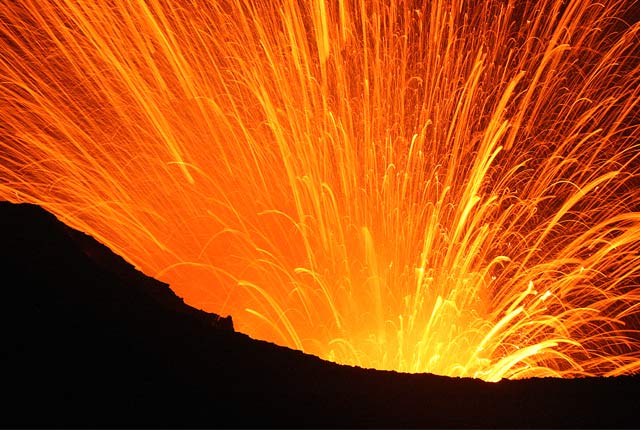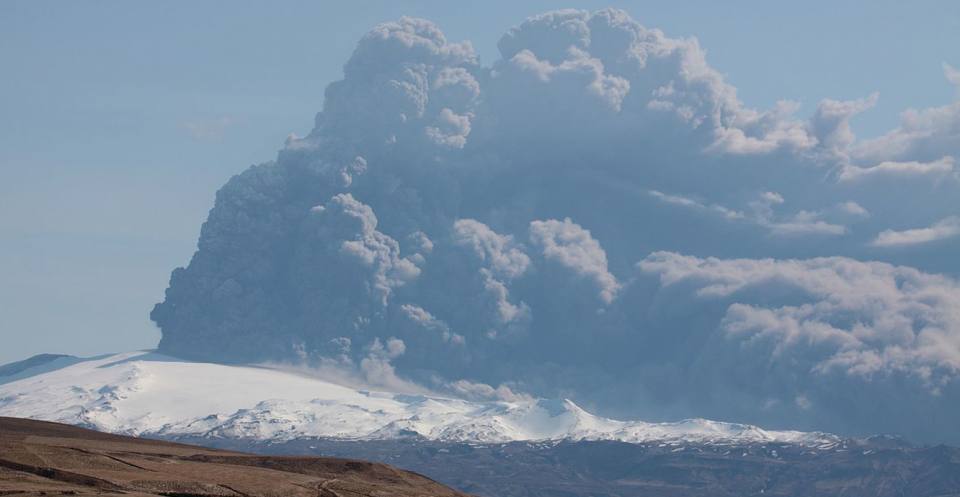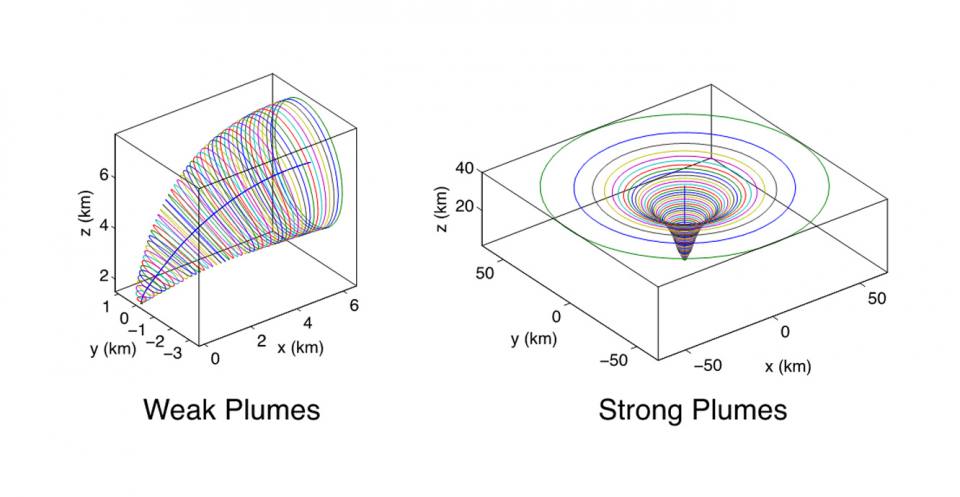Eruption source parameters (ESPs) are those parameters that describe the initiation condition for numerical models. Different models require different input parameters, however a common feature of all numerical models is that the quality of model outputs is dependent on the quality of model inputs. For the past few years, BGS Volcanology has worked towards defining resources to enable ease of selection of source parameters for volcanic plume-rise and ash-dispersion models.
Plume-rise models
Plume-rise models simulate the rise of erupted volcanic material from the vent up through the atmosphere. These models are important for relating the eruptive conditions at the vent with, for example, the eruption plume height, a key parameter when describing eruptions and when initiating ash-dispersion models.
The BGS co-leads this project with Dr Thomas Aubry at the University of Cambridge, to produce a dataset of source parameters for plume-rise models and to validate them.
A team of experts from the volcanological community scoured literature on past volcanic events where independent eruption plume height, volume and duration information were available. This data was extracted to form a database, currently in development, which will be made available on the BGS website.
One first output from the analysis of the collated data is a reprisal of the relation between volcanic plume height and the mass eruption rate of an eruptive event. This relation is key for informing other models, e.g. REFIR, and atmospheric dispersal models.
Ash-dispersion models
Ash-dispersion models are used in both forecasting the transport of volcanic ash during an eruptive event and for reproducing the conditions of past eruptions. These models are reliant on a number of input parameters, including:
- eruption volume
- plume height
- duration
- particle characteristics (e.g. size; density; shape)
When forecasting imminent or new eruptive events, where no observations of the event are available, the choice of input parameters is defined through an understanding of past eruptive activity at a volcano. However, the record of past volcanism at many volcanoes is scarce due to a lack of observations or poor preservation of eruptive deposits. To aid parameter choice given a lack of observations, the US Geological Survey, along with a number of contributors, produced a database that assigned key eruption parameters to all 1500 volcanoes active within the last 10 000 years.
Within this database, each volcano is assigned a category based on its dominant eruptive chemistry and the magnitude of past events, and parameters are assigned accordingly.
Over the past four years, the BGS has been working to update the database. Information within the database has been updated based on recent volcanic activity and a dedicated website for the database has been produced. To inform further updates to the database, surveys were conducted with the Volcanic Ash Advisory Centres, who are key users of ash dispersion models, to identify future user needs and requirements.
Reference
de’ Michieli Vitturi, M, Engwell, S L, Neri, A, and Barsotti, S. 2016. Uncertainty quantification and sensitivity analysis of volcanic columns models: Results from the integral model PLUME-MoM. Journal of Volcanology and Geothermal Research, Vol. 326, 77–91.
Contact
If you want to discover more then please contact Samantha Engwell.
Access the eruption source parameter database
You may also be interested in

Volcanology
Our scientists lead research projects and work in partnerships around the world to improve our understanding of volcanic processes, hazards and risks.





